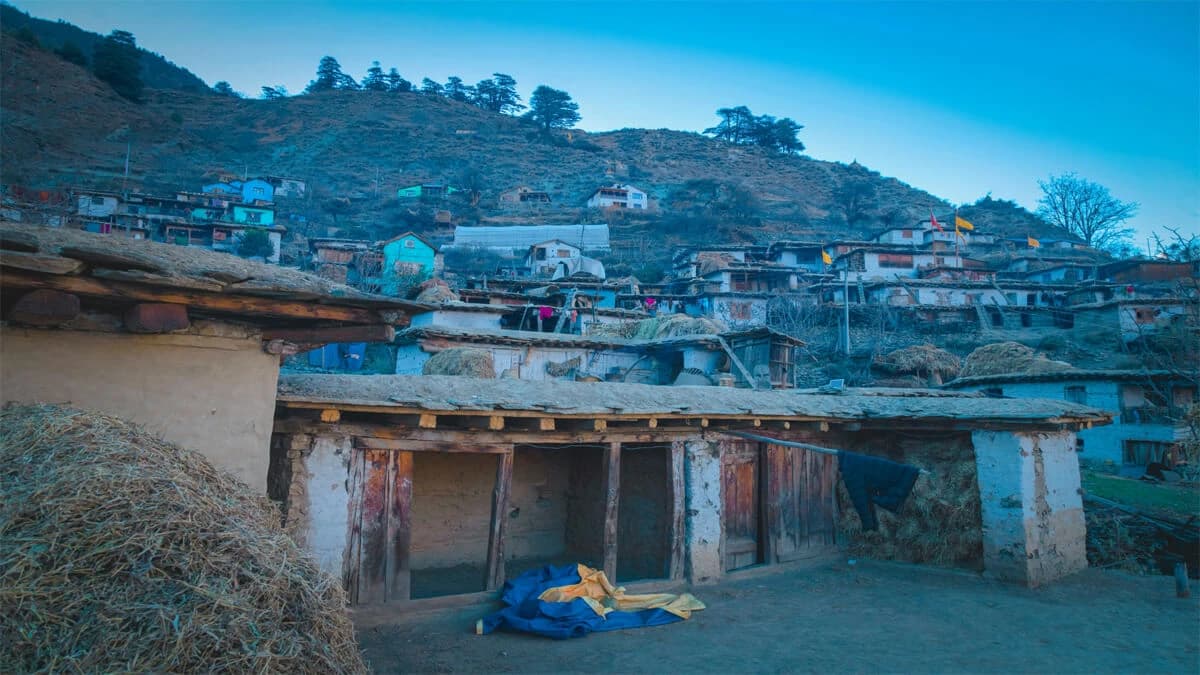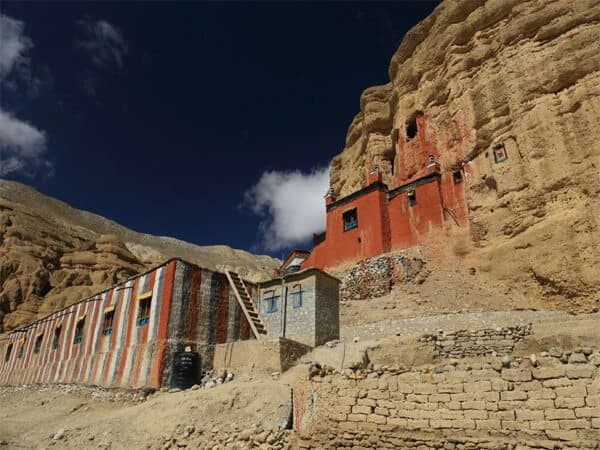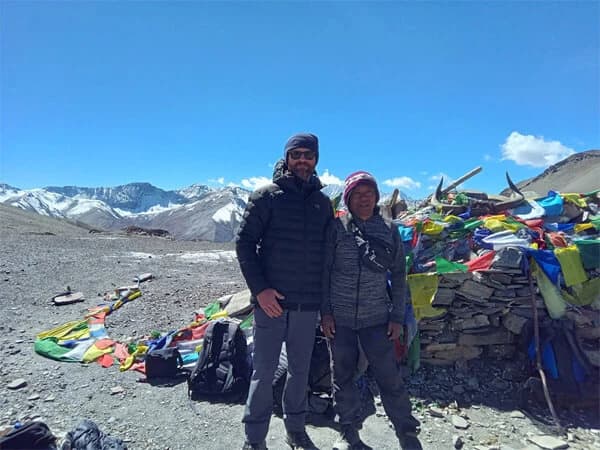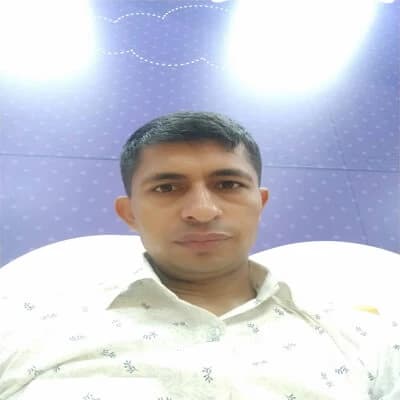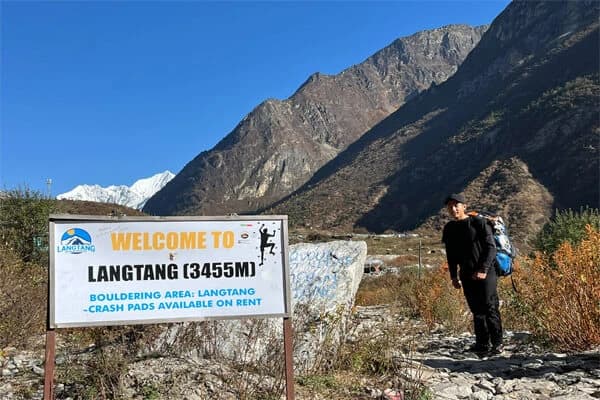Discover the ultimate adventure in one of Nepal’s most remote regions with this comprehensive Upper Dolpo trekking guide. From permit requirements and best trekking seasons to detailed route information and difficulty levels, this guide helps you prepare for the journey through untouched Himalayan landscapes, ancient monasteries, and the stunning Shey Phoksundo Lake. Ideal for experienced trekkers seeking off-the-beaten-path experiences, Upper Dolpo offers a rare glimpse into authentic Tibetan culture and raw mountain beauty.
Every Thing You Need to Know About Upper Dolpo Trek
This Upper Dolpo trekking guide covers everything you need to plan your journey—routes, permits, difficulty, best time to trek, and expert tips. located in the northwestern part of Nepal is a static area that is far from modernity. The isolated area that has Tibetan traditions and natural attractions at its best is one of the hardest to trek but highly rewarding. For those who want a break from mainstream attractions, this trip will take you through ancient monasteries and over-high passes into an unchanged culture for many years.
In this detailed guide, we shall look at everything regarding the Upper Dolpo trek; its geography, cultural importance, how to organize your trip as well as ensuring your safety throughout. This guide is intended for both seasoned trekkers and novices who crave additional challenges, giving them enough information to embark on this remarkable journey.
Understanding Upper Dolpo
Upper Dolpo is a secluded, culturally rich region in Nepal, offering trekkers stunning landscapes and a glimpse into ancient Tibetan traditions.
Geography and Location
Upper Dolpo is situated in the Dolpa District of Nepal and falls within Shey Phoksundo National Park. Tibetan border is located to the north while it experiences a semi-arid climate due to its location in the rain shadow of the Dhaulagiri range which results in an area with vary high landscapes. It has rugged mountains, deep valleys, and high-altitude desert characteristics whose minimum and maximum elevations are 2500 meters (8,202 feet) and more than 7000 meters (22,965 feet) respectively.
Cultural and Historical Significance
Upper Dolpo has a Tibetan culture where there is a coexistence between the ancient Bon religion and Tibetan Buddhism. The region contains ancient monasteries, chortens, and numerous prayer flags that indicate its rich spiritual heritage. The locals known as Dolpo-pa have been able to maintain their traditional ways such as their unique dialects, attire as well as customs regardless of the poor climatic conditions and remote locations.

Flora and Fauna
Different types of flora and fauna are known to exist due to the geographic uniqueness of this region. At lower altitudes, pine, juniper, and rhododendron forests grow abundantly, while above the tree line there are alpine meadows and desolate highlands. Rare or little-known animal species like snow leopards, blue sheep, Himalayan vultures, and mysterious Tibetan wolves can be found here; thus making it a paradise for wildlife lovers.
Unique Aspects of Upper Dolpo
Upper Dolpo is characterized by isolation, which is one of its most outstanding aspects. The area remains almost inaccessible as there are no motorable roads and limited means of communication. This isolation has been instrumental in preserving cultural practices and natural resources within the region hence giving trekkers a once in a lifetime chance to see a way of life that has not changed much over the years. Upper Dolpo also boasts features such as the blue waters of Shey Phoksundo Lake (a glacial lake); ancient Shey Gompa (a monastery made from crystals); and traditional yak caravans trading salt with Tibet among other things that make Upper Dolpo special.
Planning Your Trek
Plan carefully for Upper Dolpo, considering the best season, necessary permits, and physical preparation for the high-altitude challenges.
Best Time to Visit
The best time to do the Upper Dolpo trek is between March and October.
- Spring: After winter the landscape is green and filled with wildflowers on the meadows. The temperature is moderate and the sky is mostly clear offering you wonderful sights of peaks around.
- Autumn: The season is mostly known for trekking in Upper Dolpo because there is stability in weather patterns during this period throughout the year. It means that fresh air is inviting; thus it helps those interested in photography or just admiring nature to visit its most beautiful scenery.
Necessary Permits and Regulations
Upper Dolpo is an area where movement is prohibited, so climbing this mountain calls for a multitude of permits:
- Restricted Area Permit (RAP): This one is obligatory, and it must be obtained through a registered trekking company. It costs more than the other trekking permits due to its remote and restricted nature.
- Shey Phoksundo National Park Permit: There is a need for this permit since crossing the national park boundary is part of the journey. The entry point can be in Kathmandu or purchased via the trekking agency.
- Trekkers' Information Management System (TIMS) Card: This card must be carried by all trekkers in Nepal and used as a means of tracking their travels for safety reasons. You can get it from TAAN at Kathmandu or from your trekking agency.
Physical Preparation and Training

Upper Dolpo Trek requires you to be in good shape physically because it is difficult. So, for a successful trek:
- Do cardiovascular training which is taking part in activities like swimming, cycling, and running consistently to build your stamina.
- Strengthen your legs and core through squats, lunges, and planks.
- Before your trek learn how to hike at high altitudes in order to adjust to small amounts of oxygen
Health Considerations
- Be aware that you might experience altitude sickness such as vomiting, headache, or dizziness. Drink more water so that your body can remain hydrated while ensuring no more than three acclimatization days are part of your itinerary.
- Ensure vaccinations are up-to-date on routine ones plus they could also be seen for diseases including hepatitis A, typhoid fever, and rabies besides carrying a personal first aid kit with altitude sickness medications, pain relief as well as diarrhea medications.
- It is important to have a good comprehensive travel insurance policy that includes high-altitude trekking and emergency evacuation.
Dolpo Trek Itinerary Details
The day-by-day breakdown of the Upper Dolpo Trek, including key highlights, acclimatization days, and alternative routes to help you plan your journey effectively.
Day-by-Day Breakdown
Arrival in Kathmandu and Preparation: Spend the day exploring Kathmandu and preparing for the trek. Obtain the necessary permits and meet your guide.
Flight to Nepalgunj and Juphal: Fly from Kathmandu to Nepalgunj, a city in western Nepal, and then take a connecting flight to Juphal, the starting point of the trek.
Upper Dolpo Trekking Days:
- Day 1-3: Trek from Juphal to Dunai and then to Ankhe. The trail takes you through beautiful forests and along the Bheri River.
- Day 4-6: Continue to Ringmo Village and Shey Phoksundo Lake. Spend a day acclimatizing by exploring the lake and the surrounding area.
- Day 7-10: Trek to Shey Gompa via Kang La Pass (5,240 meters). Explore the ancient Shey Gompa, also known as the Crystal Monastery.
- Day 11-15: Cross the Saldang La Pass (5,200 meters) and trek through the remote villages of Namgung and Saldang.
- Day 16-20: Continue to Dho Tarap, one of the highest human settlements in the world, and explore the unique Tibetan culture of the region.
- Day 21-23: Trek back to Juphal via Tarakot and Dunai, retracing your steps through the beautiful landscapes.
Departure from Kathmandu: After completing the trek, fly back to Kathmandu and enjoy a well-deserved rest before departing for home.
Alternative Routes and Side Trips
Consider side trips to areas like the Rara Lake region or a detour to the hidden village of Chharka Bhot. These alternatives offer additional opportunities for exploration and adventure in Upper Dolpo.
What to Pack
Pack essential gear like warm clothing and trekking equipment to ensure safety and comfort in Upper Dolpo’s remote, rugged environment.
Essential Clothing and Footwear
- Base Layers: Moisture-wicking thermal tops and bottoms.
- Insulating Layers: Fleece jackets and down jackets for warmth.
- Outer Shell: Waterproof jacket and pants.
- Trekking Boots: Sturdy, waterproof boots with good ankle support.
- Accessories: Warm hat, gloves, buff, and sunglasses.
Gear and Equipment
- Sleeping Bag: Rated for -20°C/-4°F, suitable for high-altitude nights.
- Trekking Poles: Essential for stability on uneven terrain.
- Headlamp: With extra batteries, for nighttime visibility.
Personal Items and Toiletries
- First Aid Kit: Include medications for altitude sickness, pain relief, and digestive issues.
- Toiletries: Biodegradable soap, hand sanitizer, and toilet paper.
- Food and Snacks: High-energy snacks like nuts, energy bars, and dried fruits.
Important Documents
- Permits: Carry copies of your Restricted Area Permit, TIMS card, and Shey Phoksundo National Park Entry Permit.
- Passport: Keep a copy of your passport and visa with you at all times.
Upper Dolpo Trek Accommodation and Meals
Accommodation in Upper Dolpo ranges from basic teahouses to camping in more remote areas. Meals are simple but hearty, focusing on local staples like rice, lentils, and potatoes to fuel your trek.
Types of Accommodation
- Teahouses: Basic lodges that provide simple rooms with shared bathrooms. They are available in lower-altitude villages.
- Camping: This is a requirement in remote areas where teahouses do not exist. It necessitates a support team to carry camp items and prepare food.
Typical Meals and Dietary Considerations
Food is usually made up of rice, lentils, vegetables, noodles, and bread. Meat is rare in the area making it easier for vegetarians. It is recommended that you carry snacks and supplements to ensure enough energy for the trek.
Recommended Snacks and Supplements
- Energy Bars: These are small and high-calorie packed carbohydrates.
- Electrolyte Powder: It is mixed with water and it prevents getting dehydrated.
- Dried Fruits and Nuts: These are small in size making them easier to transport while still providing nutrients.
Hiring Guides and Porters
Hiring local guides and porters enriches your experience and supports ethical, sustainable trekking in Upper Dolpo.
Benefits of Hiring Local Guides
Local tour guides possess valuable insights into the area, its culture, and language. In addition, they can help deal with logistics and permits, as well as guarantee your safety on the expedition.
Cost Considerations
When you hire a guide and a porter, you add extra expenses including their daily pay and food. But it is worthwhile since it will really enhance your hiking trip and also boost the local economy.
Ethical Trekking Practices
Your guides and porters must be well cared for and paid fairly. Choose a trustworthy trekking company that utilizes ethical principles in its dealings.
Tips for Interacting with Guides and Porters
Express gratitude at the end of the trek by tipping them slightly out of appreciation. This is due to their experience and knowledge that they have better, different from your own.
Dolpo Trek Safety and Precautions
Stay safe by preparing for altitude sickness, unpredictable weather, and emergency situations during your trek.
Dealing with Altitude Sickness
Gradual ascent and proper acclimatization are key to preventing altitude sickness. Recognize the symptoms early and descend if necessary.
Emergency Procedures
In case of severe altitude sickness or injury, evacuation may be necessary. Carry a satellite phone or GPS device with SOS functionality and ensure your travel insurance covers emergency evacuation.
Weather Challenges and Preparedness
The weather in Upper Dolpo can be unpredictable, with sudden changes in temperature and conditions. Always carry appropriate clothing and gear, and be prepared for delays.
Staying Healthy on the Trail
Practice good hygiene, purify all drinking water, and stick to well-cooked meals to avoid gastrointestinal issues.
Cultural Etiquette and Respect
Respect local customs and traditions in Upper Dolpo to foster positive interactions with the region's culturally rich communities.
Understanding Local Customs and Traditions
The Dolpo-pa people have deep spiritual and cultural traditions. Respect their customs, including removing shoes before entering homes or monasteries, and dressing modestly.
Visiting Monasteries and Religious Sites
When visiting monasteries, always ask for permission before entering or taking photos. Observe silence and participate in rituals respectfully.
Photography Etiquette
Ask for permission before photographing people, especially in villages and religious sites.
Responsible Tourism Practices
Practice Leave No Trace principles, minimize waste, and support local businesses by purchasing locally made products and hiring local services.
Environmental Considerations
Tread lightly and follow sustainable practices to help preserve Upper Dolpo’s pristine environment for future generations.
Leave No Trace Principles
Carry all trash with you and dispose of it properly in designated areas. Avoid using plastic bottles; instead, carry a reusable water bottle and a water purification system.
Waste Management
Properly manage human waste, especially in remote areas where facilities are not available. Use biodegradable soap and toiletries to minimize environmental impact.
Protecting Wildlife
Avoid disturbing wildlife and stay on designated trails to protect the fragile ecosystem of Upper Dolpo.
Sustainable Trekking Practices
Support eco-friendly trekking practices, such as using solar-powered devices and minimizing the use of non-renewable resources.
Additional Tips and Resources

Useful tips and resources help you prepare for a successful and well-informed trek in Upper Dolpo.
Budgeting for the Trek
Upper Dolpo is one of the most expensive trekking destinations in Nepal due to the cost of permits, flights, and logistics. Plan your budget accordingly and be prepared for unforeseen expenses.
Communication and Connectivity
The region has limited communication facilities. Carry a satellite phone or rent one in Kathmandu for emergencies. Inform your family and friends about the limited connectivity before you depart.
Useful Apps and Maps
Download offline maps and trekking apps like Maps.me or Gaia GPS for navigation. Carry a physical map as a backup.
Recommended Reading and Viewing
- Books: "Snow Leopard" by Peter Matthiessen, which details a journey through Dolpo.
- Documentaries: "Himalaya" by Eric Valli, which beautifully captures the landscape and culture of Upper Dolpo.
FAQs of the Every Things You Need to Know About Upper Dolpo Trek
Is prior trekking experience necessary?
Yes, due to the challenging nature of the trek, prior high-altitude trekking experience is highly recommended.
What is the food like on the trek?
Expect simple, vegetarian meals, with staple foods like rice, lentils, and potatoes. Meat is rare and should be avoided to prevent foodborne illness.
Can I trek solo in Upper Dolpo?
Solo trekking is not allowed due to the restricted nature of the region. You must trek with a registered agency and guide.
How long does the Upper Dolpo Trek take?
The trek typically takes around 23 to 25 days, including acclimatization days and travel time to and from Kathmandu. However, the duration can vary depending on the specific route and side trips you choose to take.
What is the difficulty level of the Upper Dolpo Trek?
The Upper Dolpo Trek is considered one of the most challenging treks in Nepal due to its remote location, high altitude, and long duration. Trekkers should be in excellent physical condition and have prior experience with high-altitude trekking.
Is it necessary to carry cash, and how much should I budget?
Yes, you should carry sufficient cash, preferably in Nepalese rupees, as there are no ATMs or banking facilities in Upper Dolpo. The budget can vary depending on the services you choose, but it’s advisable to carry at least USD 30-50 per day for additional expenses such as snacks, drinks, and tips.
What type of food is available during the trek?
Teahouses along the route typically offer basic meals like dal bhat (rice and lentils), noodles, potatoes, and bread. In more remote areas, the food options may be limited, so it's wise to bring additional snacks like energy bars, dried fruits, and nuts.
Can I charge electronic devices during the trek?
Charging facilities are limited and may be available only in certain teahouses at lower altitudes, often for a fee. It's advisable to bring a portable solar charger or extra batteries to ensure your devices remain powered throughout the trek.
Conclusion
The Upper Dolpo Trek is not just a physical journey but a spiritual and cultural odyssey into one of the most remote and beautiful corners of the world. With its ancient monasteries, breathtaking landscapes, and unique Tibetan culture, Upper Dolpo offers an unparalleled trekking experience that challenges the body and nourishes the soul.
If you seek adventure, solitude, and a deep connection with nature and culture, the Upper Dolpo Trek is your call to exploration. Prepare well, respect the local environment and culture, and embark on a journey that will leave you with memories and stories to cherish for a lifetime.

